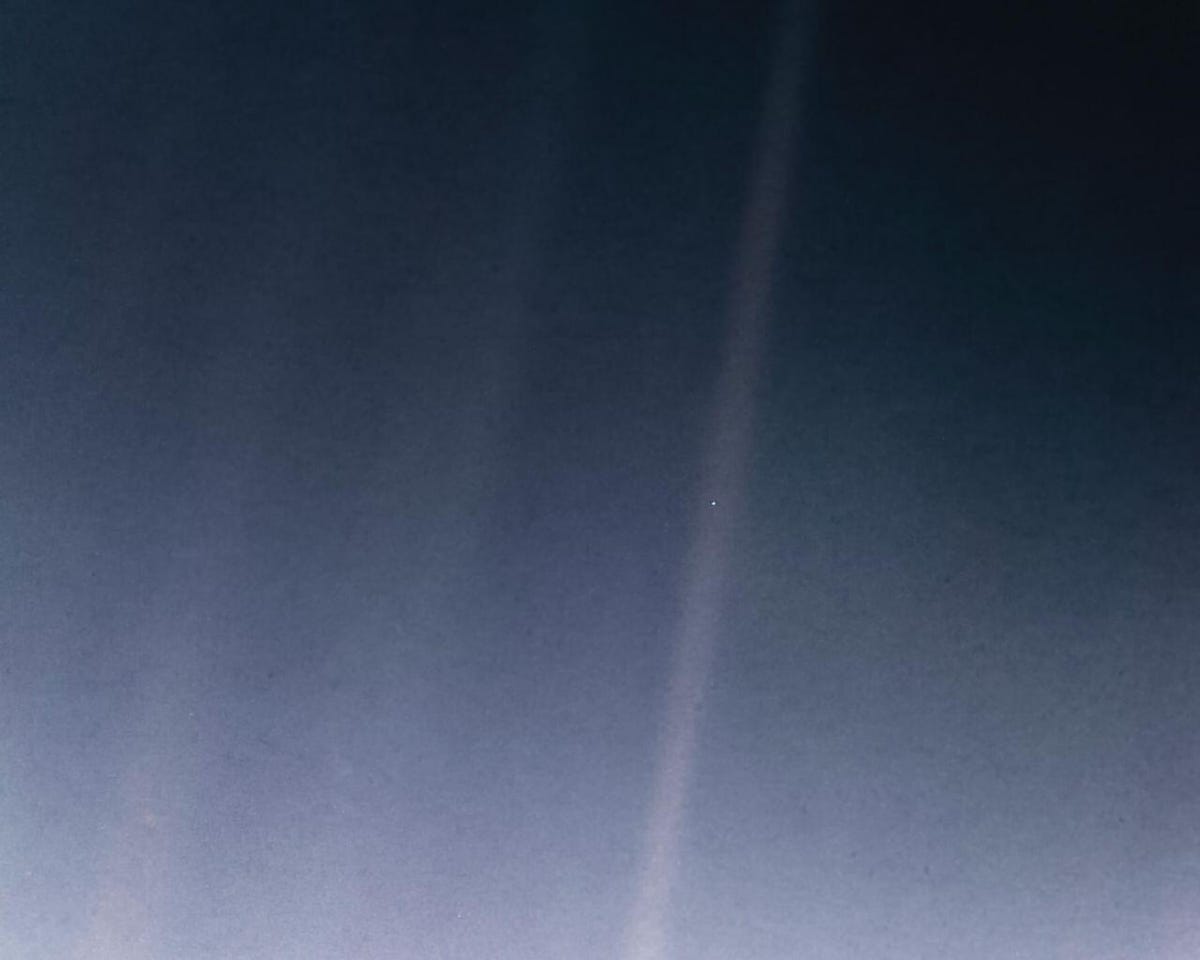
When you open up Johns Hopkins University Professor Brice Ménard’s “map of the observable universe,” you’re met with a geometric diagram overflowing with thousands of rainbow freckles, each neatly organized by color. At the bottom of this diagram lies an unnerving phrase.
“You are here.”
One negligible, barely visible dot on this graph represents our entire Milky Way galaxy — a realm with billions of stars besides our own sun, and one we occupy such a small percentage of I don’t even want to attempt writing it out.
With a single pixel, Ménard stunningly puts into perspective the cosmic brevity of everything we’ve ever truly known as human beings.
“This map, representing galaxies just as little dots, allows the viewer to basically understand different scales at the same time,” Ménard said in an overview of the interactive mechanism. “Seeing the vastness of the universe — it’s quite inspiring.”
Scrolling around the 200,000 galaxies in the map — placed in accurate, relative positions to one another — is calming because it reframes how inconsequential the footprint we place in the universe is. It’s disturbing for precisely the same reason.
It draws a distinct parallel with Carl Sagan’s famous quote about Voyager 1’s breathtaking image of Earth from 1990, “Pale Blue Dot.”
“Look again at that dot. That’s here. That’s home. That’s us,” Sagan said. “On it everyone you love, everyone you know, everyone you ever heard of, every human being who ever was, lived out their lives. The aggregate of our joy and suffering, thousands of confident religions, ideologies, and economic doctrines, every hunter and forager, every hero and coward, every creator and destroyer of civilization, every king and peasant, every young couple in love, every mother and father, hopeful child, inventor and explorer, every teacher of morals, every corrupt politician, every ‘superstar,’ every ‘supreme leader,’ every saint and sinner in the history of our species lived there — on a mote of dust suspended in a sunbeam.”

A 2020 remaster of Voyager 1’s 1990 “pale blue dot” image showing Earth as tiny speck in space.
NASA/JPL-Caltech
Though if you’re blown away by the deceptively concise magnitude of Ménard’s map, consider how it doesn’t even account for every galaxy in the universe. In reality, NASA estimates there are something like a hundred billion galaxies unfolding eternities beyond our own.
We’d need an unfathomable level of observable universe cartography to encapsulate the full breadth of the cosmos.
Slice of our universe
Along with a cadre of scientists, Ménard used data mined over two decades by what’s known as the Sloan Digital Sky Survey.
“Astrophysicists around the world have been analyzing this data for years, leading to thousands of scientific papers and discoveries,” Ménard said. “But nobody took the time to create a map that is beautiful, scientifically accurate, and accessible to people who are not scientists. Our goal here is to show everybody what the universe really looks like.”
Once you click “explore the map” under the Milky Way galaxy label, you arrive at a screen prompting you to “scroll up to travel through the universe.” That such a sentence even exists underscores just how far technology has come.
“From this speck at the bottom,” Ménard said, “we are able to map out galaxies across the entire universe, and that says something about the power of science.”

A slice of our universe as seen with Ménard’s interactive map.
Johns Hopkins University
Even more impressive is how, as you follow the prompt, a ticker at the bottom left of the screen shows you how many billions of years back in time you’ve scrolled. Meanwhile, the dots go from gradients of pale blues to yellows to oranges to reds, ultimately retreating to a cool midnight hue.
“Each dot is a galaxy shown with its apparent color,” the page reads. “Spiral galaxies are faint and blue. Our galaxy, the Milky Way, is a blue spiral.”
Elliptical galaxies are shown as yellowish and brighter, while reddened speckles indicate realms that have grown distant enough for the light they emanate to stretch and appear to us on Earth as crimson blurs.
Here’s an illustration showing what redshift basically does to the light coming from galaxies moving away from Earth.
NASA/JPL-Caltech//R. Hurt (Caltech-IPAC)
Further back 9 billion years, the map exhibits vivid blue spots to represent quasars rather than galaxies. These are extreme jets of light spewing out from the guts of black holes sitting at the center of certain galaxies.
Basically, it’s really hard to see galaxies from this era of cosmic history, reddened to the point of near-invisibility, but quasars are bright enough to act like flashlights. Their brilliance shines across the universe, revealing scenes otherwise shielded by darkness and softened with distance.
But beyond even those quasars lies a splotch of blackness — evocative of the mysteries lurking beyond the red end of the electromagnetic spectrum. Infrared waters.
“We encounter an epoch during which the universe is filled with hydrogen gas that prevents the propagation of visible light we could observe today. This epoch is called the “dark ages,'” the page reads.
NASA’s magnificent James Webb Space Telescope is such a big deal because it’s built to find secrets hidden in this region invisible to human eyes. Constructed with an army of high-tech infrared sensors, it’s working on detecting galaxies from near the beginning of time stuck in a limbo we cannot see with our minds or machines.
With each Webb discovery, hopefully maps like this one will become populated where their empty spaces currently sit.
And at the very, very top of the page, a marbled photo of the edge of the observable universe. The first flash of light emitted post-Big Bang, nearly 14 billion years ago. The Cosmic Microwave Background.
“We cannot see anything beyond this point,” the map concludes after you scroll back to the beginning of existence. “The light travel time to us is greater than the age of the universe.”
